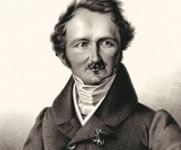Different Styles & Periods
- In the beginning was the castle
- A declaration of love to antiquity
- From Renaissance to Romanticism
- Baroque centre of culture and enlightenment
- Baroque magnificence
- Baroque gardens in the north
- Palatine baroque and Francophile elegance
- Late-baroque treasure troves
- Baroque to Biedermeier in Berlin and Brandenburg
- The Golden Age of Classicism
- Jewels of historicism
- Neo-Gothic romanticism
Contact
Baroque magnificence
Versailles, the magnificent palace of "Sun King" Louis XIV, was the model that many 17th and 18th century European rulers sought to emulate. This grand "théâtre du monde", an embodiment of the centralist principle, reflected godlike powers and splendours. Art and, above all, architecture had an important political role to play: they became visual expressions of ideological ideas, designed to impress the people. The desire to imitate Versailles was so strong that French was spoken at the courts of Europe.
Ludwigsburg Palace
Show on map »
Solitude Palace, Stuttgart
Show on map »
Arolsen Palace
Show on map »
New Palace, Bamberg
Show on map »
Travel Planner
Select an option...
Location
- Ludwigsburg Palace
- Solitude Palace, Stuttgart
- Arolsen Palace
- New Palace, Bamberg






